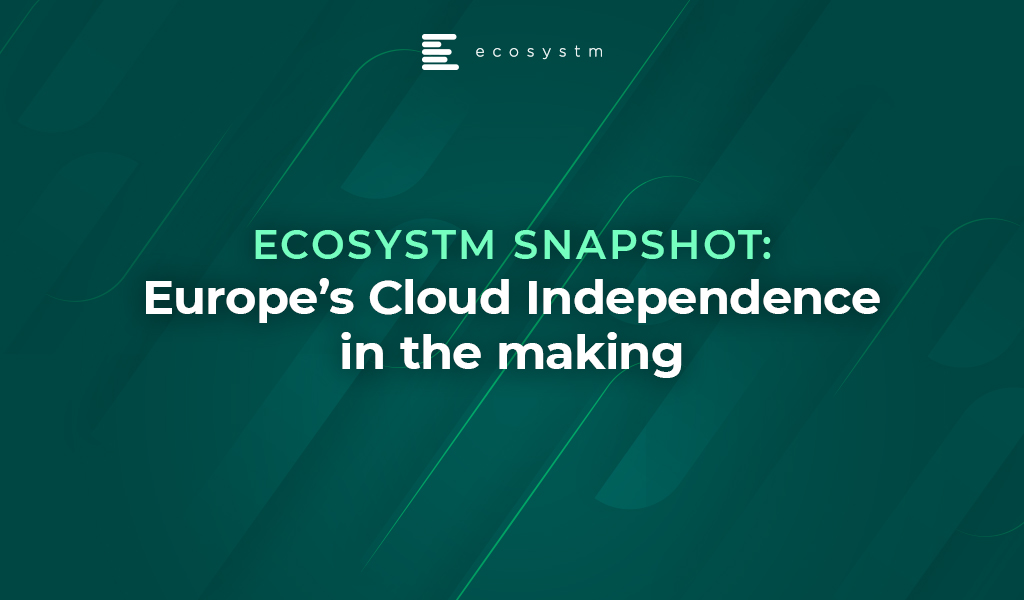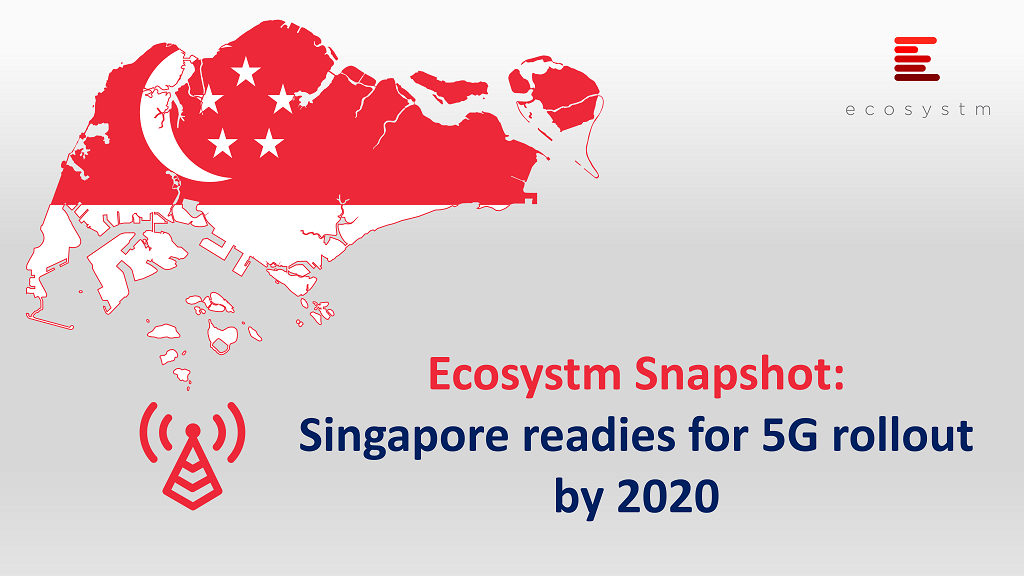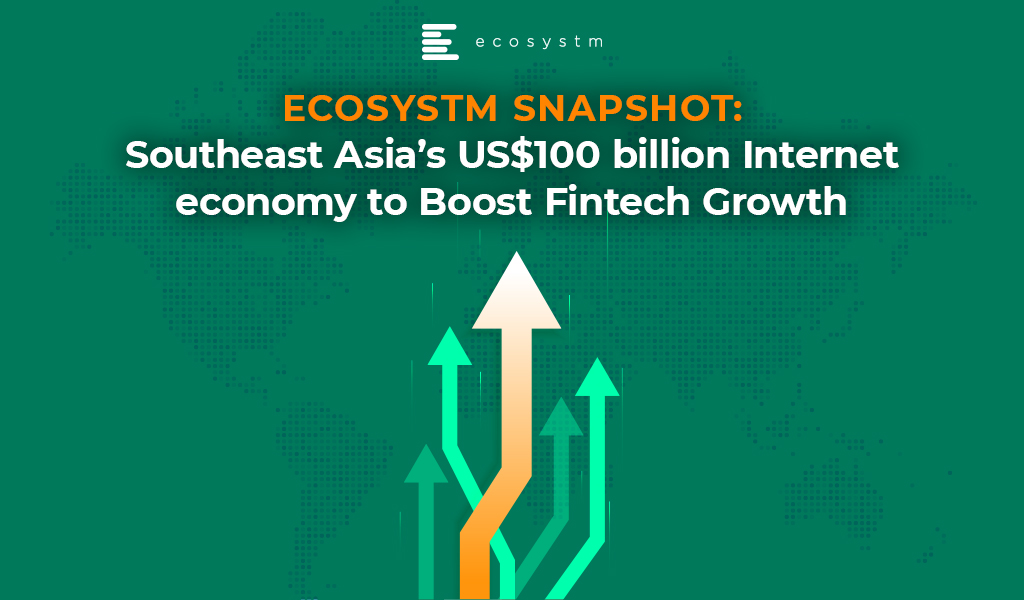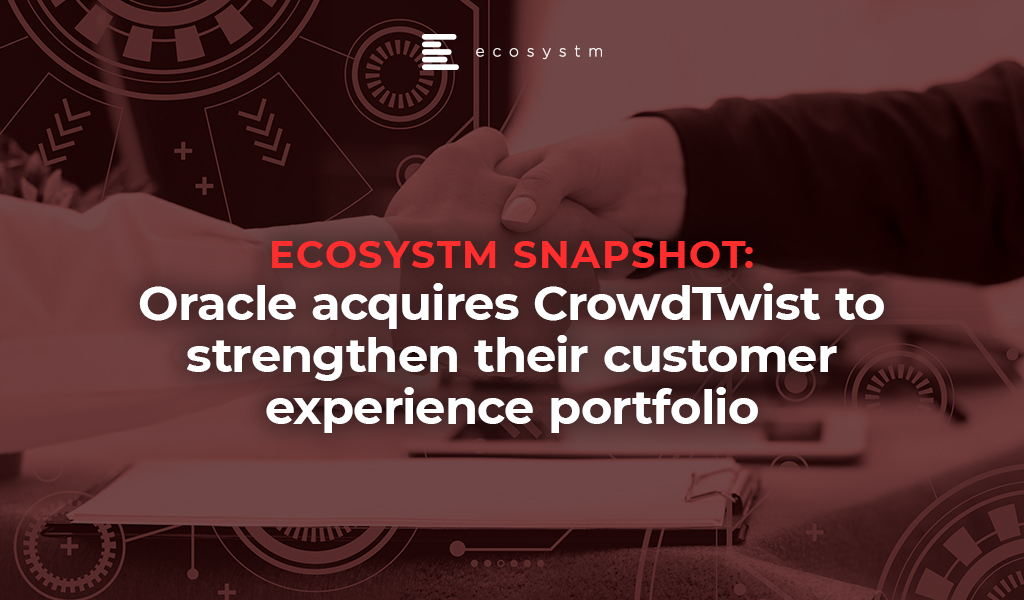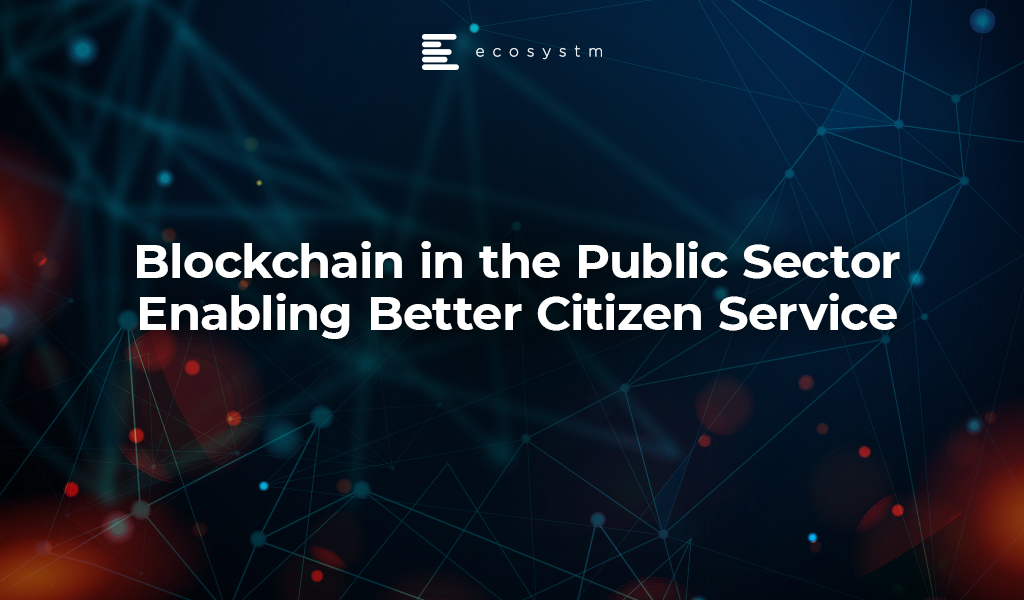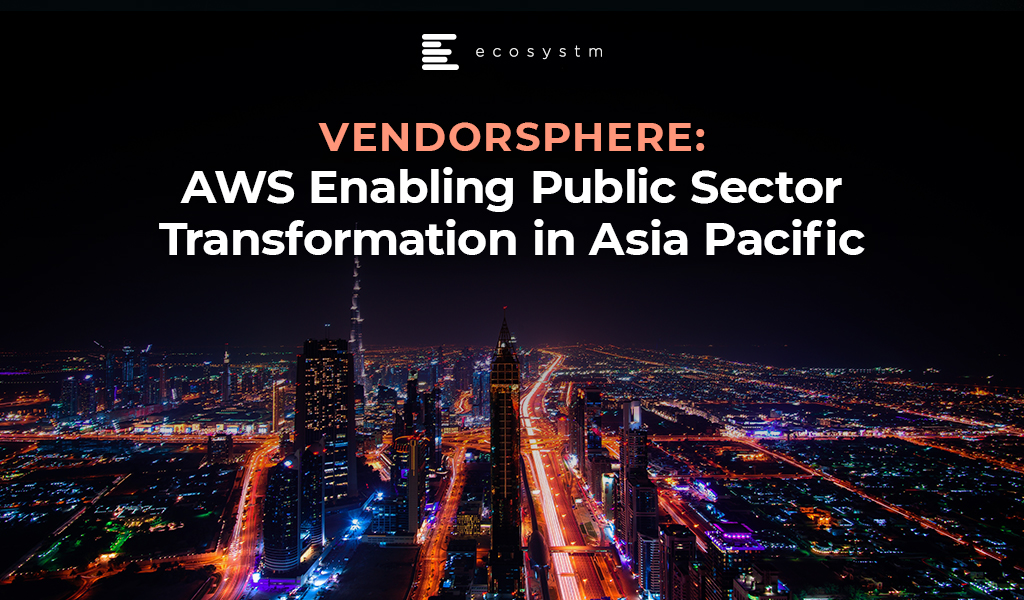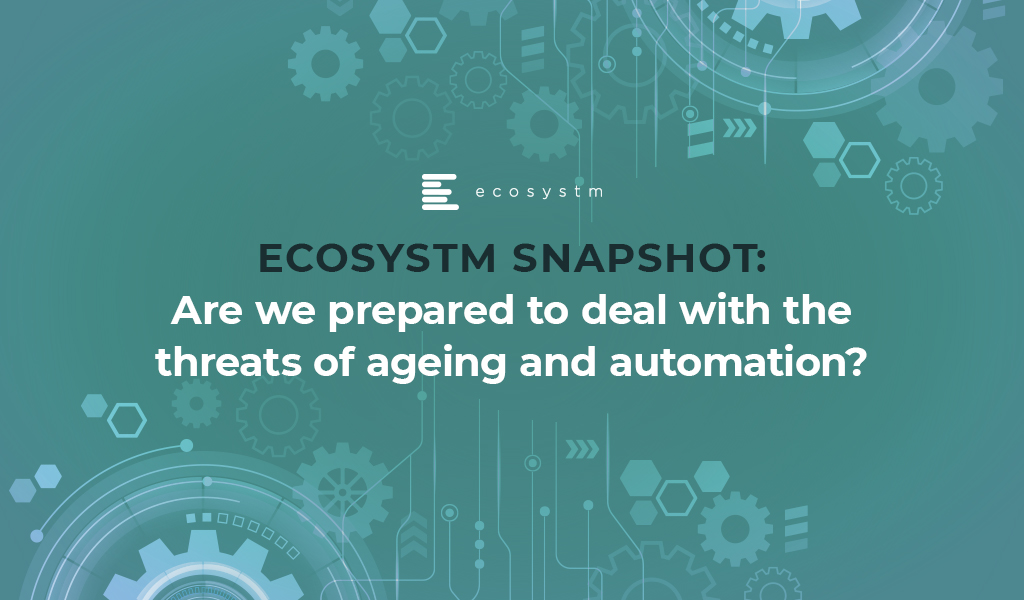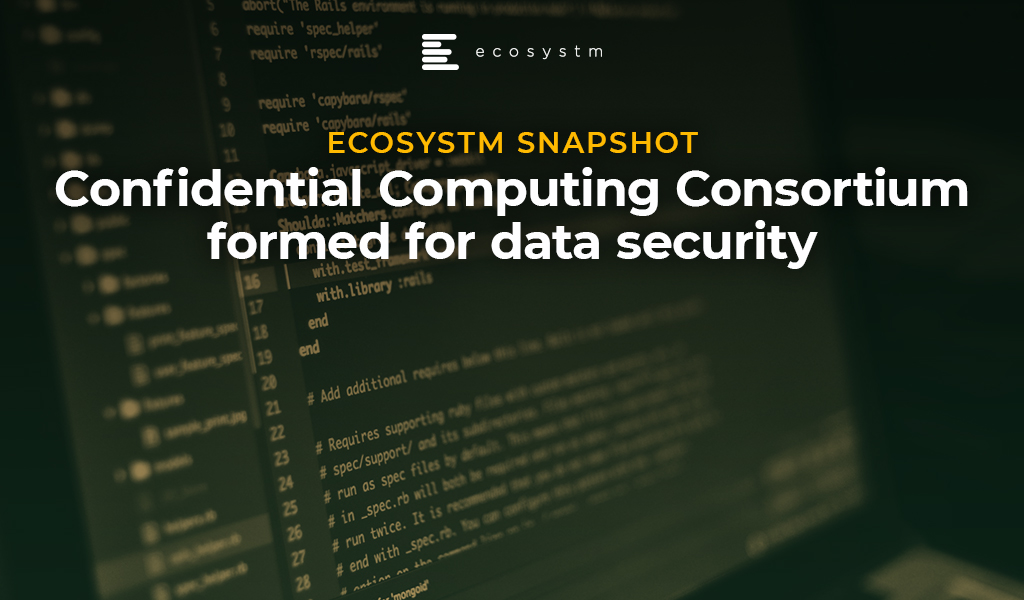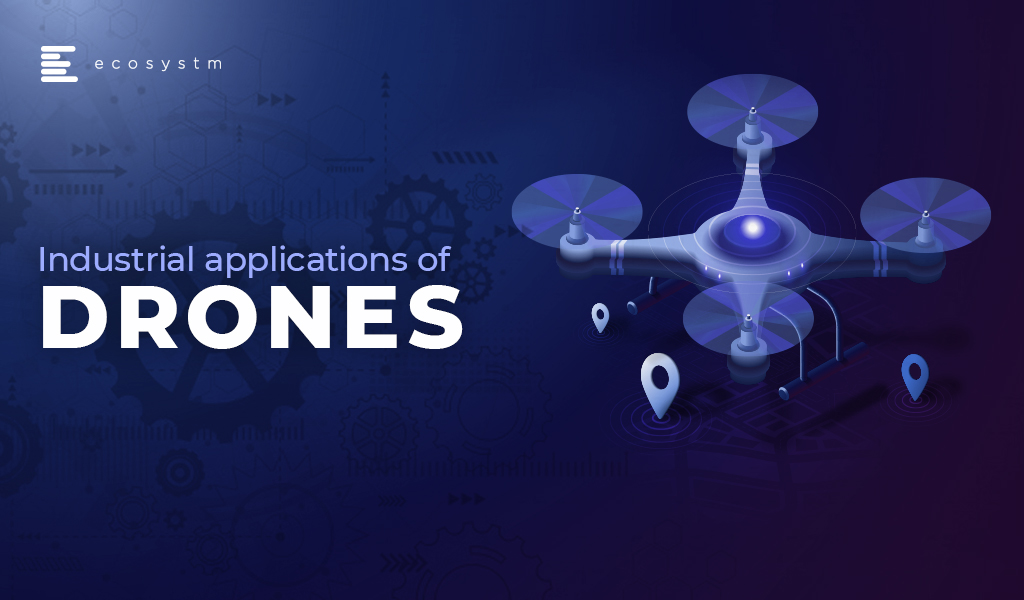The global cloud market is dominated by AWS, Microsoft, IBM, Google, and Alibaba, all of whom are strengthening their grip on the global market. Their continued dominance means that over time, organisations reliance on them will rise.
In order to reduce the dependency on American and Chinese cloud providers, and to counteract mounting data security and privacy concerns, France and Germany are drawing plans to strengthen Europe’s data infrastructure.
The countries announced a proposal to boost Europe’s cloud computing sector in the form of a homegrown, and government-backed, data infrastructure project to establish a safe and sovereign European data infrastructure.
Last month, France recruited tech companies Dassault Systemes – a French software company and OVH – a privately held French cloud computing company to provide plans to break the dominance of U.S. cloud companies.
To serve as an alternative to American and Chinese cloud providers and enable innovative business models, Germany and France have collaborated on developing the core concepts of the European cloud network, called Gaia-X, before trying to get other European countries to join early next year. As a part of Gaia-X, the cloud participants will be required to certify their customers’ information security – e.g. where it is stored and how it is processed. Germany has formed a broad alliance of associations and companies, including Siemens, SAP, Deutsche Bank and Deutsche Telekom for the European cloud project. Claus Mortensen, Principal Advisor at Ecosystm said, “the project is focusing on security at its core and the idea of certifying customers could further help ensure data security and data privacy.”
Mortensen continued, “so far, cloud uptake in Europe has trailed other regions – especially North America and a number of countries in Asia. Whether or not these projects will succeed depends on several factors: the political will behind the project, whether the process becomes overly complicated and lengthy and whether the different companies involved can cooperate when needed.”
Mortensen added, “there is nothing wrong with countries in the EU building cloud infrastructure and issuing tenders for private companies to build this infrastructure – as long as the tenders have followed EU rules and they provide non-discriminatory access to this infrastructure. In the end, it will come down to how the infrastructure is managed and who owns it.”
French and German government officials are set to meet this month, where other interested companies will be invited to provide their inputs. The aim is to create a governance structure for the initiative before the end of the year.
Another goal of pushing homegrown cloud platforms is to support European companies in their development of AI and algorithms and to help them protect against the marketplace which is becoming the domain of a few big vendors.
“The existing cloud giants have technical know-how and readiness, so competing with them will not be easy unless the project can differentiate in ways other than the typical selling points such as price, scalability, granularity, etc. The political backers of this project may be relying on the ‘Made in Europe’ case, but I doubt that will be enough to persuade the bulk of future potential customers” said Mortensen. “More choice is always good for customers and if an objective of this project is to increase cloud uptake in Europe, this would certainly help.”
Singapore’s digital economy vision where every citizen tech and business is connected by a world-class infrastructure will be empowered by the introduction of 5G in 2020. In June this year, Singapore’s telecommunication regulator, Infocomm Media Development Authority (IMDA) unveiled plans to set aside SG$40 million to build up the supporting ecosystem to fuel 5G innovation, focusing on six key verticals including smart estates, urban mobility, and maritime.
Gearing up for 5G and in order to deliver the greatest value to the economy, (IMDA) recently called for 5G proposals from Singapore’s Mobile Network Operators.
Commenting on the rollout of 5G, Ecosystm Principal Advisor – Telecommunication, Peter Wise said “5G promises much faster, more reliable wireless connectivity that will bring applications such as augmented reality, higher quality video and eventually smart cars, to life. Moreover, IoT will also be enriched by the increased data carrying capacity that 5G enables.”
Singapore pushing for four 5G networks instead of two
Instead of the two initially planned networks for 5G, there are now four networks proposed to be rolled out. Two networks will be used for full-fledged 5G networks whereas the other two will be smaller ones that will provide limited coverage. The two smaller networks of 800MHz will leverage on Millimetre Airwaves and will be used in small ports and factories and be Singapore’s most immediate use of 5G technology. “More networks would likely bring more competition and deeper coverage. The designation of some spectrum for port usage appears to enable applications to get up and running quickly and not have to wait for a wider rollout” said Wise.
The IMDA has called for proposals from the interested operators rather than going for an airwave auction. Proposals will be assessed on telcos’ financial capability, as well as network security design.
The introduction of 5G will be a costly and time-consuming activity in order to set up the infrastructure and provide customers with sufficient coverage. “Some existing 4G cell sites will be able to be upgraded to 5G through software or card swap outs, which are comparatively cheaper than acquiring and building whole new cell sites. However, over time, 5G will require a denser network of smaller cell sites, and there may need to be infrastructure sharing arrangements between MNO’s for acquiring these new sites for practical and economic reasons,” said Wise.
Only half of Singapore will have 5G coverage initially
IMDA announced that at least 50% of Singapore will be covered with a standalone 5G network by the end of 2022 and full island-wide coverage by 2025. “Many users may not initially notice whether they are on 4G or 5G speeds. 4G is still more than adequate for most of today’s applications, including video” said Wise. “However, over time as heavy data applications are introduced or very high definition video becomes more mainstream the benefits of 5G will become more apparent.”
A standalone network will use 5G-specific technologies for developing newer applications around IoT, smart factories, and autonomous vehicles. “Another fascinating development will be whether any operators use 5G to compete with fibre” said Wise. “Singapore is well served by high-speed fibre broadband so while the Singapore population is high in density (making 5G economics better), it may be that having 5G as a competitor to fixed broadband is more successful in other countries where most fixed broadband is still provided over older, slower copper-based technology.”
5G is still in the early phase of its lifecycle and is at the centre of an ongoing telco development, we are yet to see how it may become crucial to economic growth.
According to a recently-released report, e-Conomy Southeast Asia 2019 by Google, Temasek Holdings Pte and Bain & Co., Southeast Asia’s Internet economy could exceed US$100 billion this year (a 39% increase from 2018) and will touch US$300 billion by 2025. The report states that Southeast Asian’s are ‘the most engaged mobile Internet users in the world’, and the region is becoming one of the world’s fastest-growing areas for Internet users – fueled by 360 million existing online users.
Analysing the current and future potential of the Southeast Asian Internet economy across its six largest markets – Indonesia, Malaysia, the Philippines, Singapore, Thailand, and Vietnam – it has been a momentous time for online travel services, online media, ride-hailing services, eCommerce, and digital financial services to leverage digital tools.
Southeast Asia’s Internet Economy is expected to grow
Southeast Asia’s fundamental changes in consumer behaviour and engagement with mobile internet have grown demand for eCommerce and Ride-Hailing services.
eCommerce is the largest and fastest-growing sector with more than 150 million Southeast Asians engaged in online shopping, and this is indicative of the fundamental changes in the way people consume eCommerce services.
Growth of digital financial services
Currently, Southeast Asia lacks adequate financial services as out of nearly 400 million adults in the region an estimated 98 million are underbanked and 198 million are unbanked.
Commenting on the expanding Internet economy, Ecosystm Principal Advisor – Growth & Expansion, Paul Gestro said “Vietnam, Philippines, and Indonesia will be the markets that could benefit the most from the US$100 billion Internet economy. This is primarily because a large percentage of the population in these markets is unbanked. With the growth and access to some form of banking (traditional or virtual) and the ability to transact a payment, this will have a huge influence on Fintech solutions.”
Another key trend is the growth of digital payment and financial services in the region. The growth of digital financial services will make the Internet economy more wide-ranging and consumers will enjoy greater access to Digital Payments and eCommerce.
Gestro added, “Insurance, payments and investment services will add to what we do now with ride-sharing and food delivery services. We will instantly make decisions on insurance and investment products and deals backed up by seamless payment mechanisms and different forms of payment.”
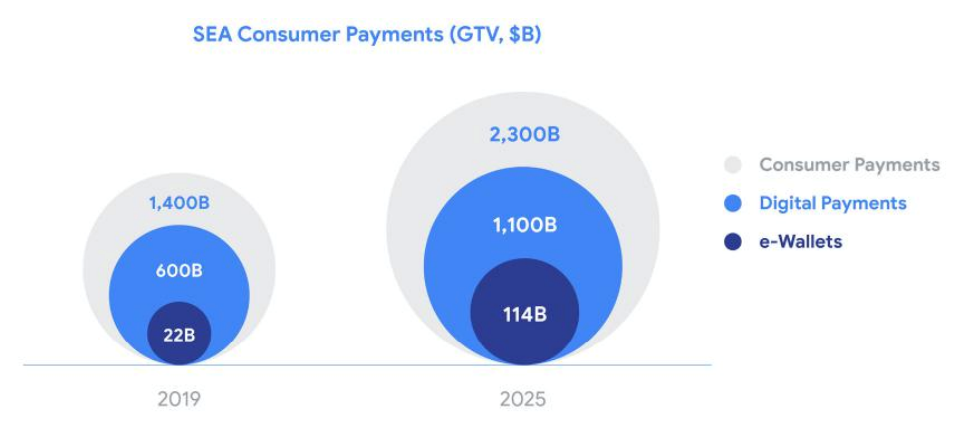
While most Digital Financial Services are still nascent, Digital Payments are expected to cross US$1 trillion by 2025 and this could open investment opportunities.
“The open investment opportunities for investors in Southeast Asia’s internet economy will be investing in applications that are mobile-ready. There will be a growth in mobile transactions and services, and companies that take a mobile-first approach will be the investors’ target,” said Gestro.
The report advises governments of Southeast Asian countries to align digital financial service regulations across the region to facilitate the development of regional business models and help channel resources towards investments in world-class tech and talent.
Despite the growing Internet economy, talent constraints remain a pressing concern as the Internet economy expands. Gestro said, “programmes in schools are required to promote a digital understanding and offer clear pathways to build knowledge and skills required for an Internet economy. This also includes companies who should be offering internships and working closely with universities to make sure the courses match where talent is needed.”
The use of mobile phones and mobile applications will connect consumers to a raft of services they previously lacked, and allow business owners and leaders to reach a whole new population of customers that was previously under-served. There’s still a lot of work to be done to ensure Southeast Asia’s Internet economy reaches its potential.
Oracle signed an agreement to acquire CrowdTwist, a leading cloud-native customer loyalty solution provider for businesses. offering personalised customer experience. CloudTwist offers over 100 engagement paths and time-to-value to marketers providing a comprehensive view of the customer.
The news comes less than a month after Oracle and Deloitte Digital partnered to deliver Oracle’s Customer Data Platform (CDP) capabilities following which Oracle also announced updates to their CDP platform Oracle CX Unity, which brings together data from marketing and advertising systems to help organisations deliver experiences across the entire customer journey.
Oracle’s increased focus on CX
Oracle continues to build their CX capabilities, and it is looking to integrate CrowdTwist’s customer loyalty solution with their existing platforms. Commenting on Oracle’s acquisition, Ecosystm Principal Advisor Audrey William said, “CrowdTwist is a leader in the customer loyalty segment and knows how to build loyalty through a deeper data analysis and stickiness with various building blocks across the customer loyalty value chain. We could see Oracle’s services becoming more customer oriented through targeted marketing campaigns and customer journey mappings across the Unity, Eloqua and Responsys platforms.”
To drive the CX journey, organisations of all sizes are seeking management and lifetime value programs. CrowdTwist’s cloud loyalty solution fits into Oracle’s strategy and would offer benefits in support orchestration, derive intelligence on customer loyalty data and provide solutions to use the data for customer retention and marketing campaigns.
“Customer loyalty cannot be easily predicted as one has to analyse how customers are reacting at every touchpoint and how emotionally they are connected with the brand,” said William. “A very basic program will not suffice in this era of CX. Applications of machine learning and AI across the portfolio will help to accurately predict and tailor the best loyalty programs. Customers using Oracle’s Cloud CX portfolio of applications will be able to further analyse the data that has been captured to personalise their marketing campaigns.”
Upon the closure of the acquisition, the CrowdTwist team will join the Oracle Customer Experience (CX) Cloud organisation. This arrangement will help marketers personalise customer engagement and obtain a more thorough view of their loyalty programs.
Governments across the globe are realising the true potential of emerging technologies to provide better citizen services and to ensure transparency and accountability. Blockchain is one of the emerging technologies that is helping and will continue to help governments to achieve transformation. Government departments and agencies are being increasingly pushed to be collaborative and share data across agencies, while at the same time maintain the security of the data in their care. A distributed ledger that can share information based on agreed-upon protocols helps governments immensely in collaborating without losing accountability.
What are the key priorities of public sector organisations? The global Ecosystm CX study finds that citizens and employees are the top priorities for government agencies and departments.
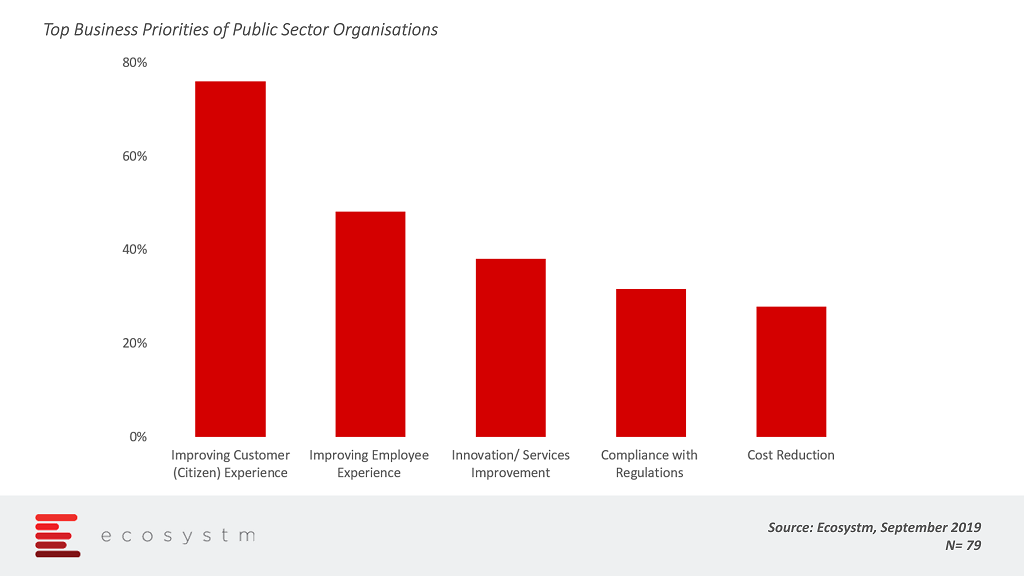
Blockchain can help the public sector achieve many of its goals –
Improving Citizen Services
As more countries aim to be eGovernments, there is a need for real-time data access, information management, and fraud prevention. Blockchain is enabling governments to provide innovative services to citizens. It is possible now to decentralise the citizen database, reducing the time and cost of fetching records. Moreover, Blockchain enhances transparency and makes the highly regulated public sector audit-ready by creating a single source of truth for all connected devices and stakeholders.
One of the earliest use cases we see is in records management. Population records are useful for several agencies from healthcare to civil services to welfare departments. In Myanmar, UNICEF has collaborated with the industry to introduce a mobile birth and death registration system based on Blockchain. This digital mobile recording system is maintained on an integrated platform controlled by several parties who maintain birth and death records of Myanmar’s citizens and is a step towards achieving universal registration.
Citizen services such as notarisation, recording and time-stamping events, transactional real-estate contracts, online storing and verification of academic degrees, identity management and so on are benefiting from Blockchain deployment.
In Georgia, the government department of Land, Property and Housing Management is using Blockchain to maintain land and property records. The blockchain-based land registry allows speedier approvals with no involvement of paperwork or multi-party signatures on physical documents. This is enhancing service quality while offering better security measures as the data is digitally stored in the National Agency of Public Registry’s land title database.
Improving Employee Experience
Maintaining massive records about individuals, organisations, assets, activities, location and national information by the government department employees is a time-consuming process. In addition to this, managing and updating the ever-growing records is made more difficult by data silos and information management protocols and of course errors creep in.
Blockchain is streamlining the workflow and information management system at an individual as well as at a departmental level. In government departments, Blockchain can redefine processes by including events and agents in a block-based system where each activity can be easily managed and accounted for. This prevents issues such as miscounts, delayed processes and slipped deadlines.
The Chilean National Energy Commission has piloted a Blockchain platform to regulate the energy sector such as installed capacity, average market price, marginal costs, hydrocarbons and more. To implement this, first the energy data was stored on an Open Energy database which was then distributed across hundreds of secure servers countrywide. Later the employees verified anomalies which minimised their workload and made it convenient to edit the central database. The information added to open ledger is readily available to employees and citizens.
Compliance with Regulations
One of the primary benefits of Blockchain technology in the public sector is compliance. The transactions recorded on distributed ledgers are documented in a central ledger providing a comprehensive, precise, irreversible, permanent and secure trail. For instance, Blockchain is used to streamline cross-border compliance adherence by matching the data with the actual trade transactions. This creates an efficient and secure system ensuring real-time compliance, significant reduction of transaction costs, elimination of customs evasion and fraud from the outset.
In June, the Chinese Customs deployed its cross-border Blockchain compliance solution. The platform aims to increase efficiency by monitoring the flow of imports and exports and helping with risk assessments and document management. As transaction information can be stored safely and transparently on a Blockchain, the platform enables easy identification of documents to be checked, making compliance easier.
Data Management and Privacy
Blockchain acts as a default record keeper for society and governments and prevents the data from being misused by criminals and hackers. Through the responsible deployment of Blockchain data structures, governments can strengthen network security by reducing risks of single points-of-failure and preventing data breaches.
Democracy Earth – a Blockchain-based community has established a decentralised online governance platform, entirely built on open source technologies. The website helps users to cast votes on various policies based on tokens assigned to the users. This also minimises expenses and creates a secure information flow in a Blockchain-based voting system.
Government agencies, such as the U.S. Department of Homeland Security (DHS), are also getting serious about Blockchain applications in data management and privacy. DHS is funding R&D in Blockchain start-ups to explore new approaches to cybersecurity. The U.S. military is also utilising Blockchain (SIMBA Chain) to secure its military communication, messaging and applications. Blockchain is used for communication between ground troops and their headquarters. In addition to securing communications, the US Airforce is using Blockchain to track 3D printed components throughout their life cycle. With SIMBA, the top-secret printing blueprints are shared without much surveillance – this has enabled the Department of Defense to maintain a digital library of parts.
Cost Reductions
The government has clear citizen responsibilities and fulfilling them with a limited set of resources is one of the prime challenges for public departments. Reconciling expenditure with the budget is a time-consuming, and expensive procedure. Blockchain-based payment and accounting systems can help governments to reduce process costs by removing redundancies, streamlining processes, decreasing audit burden and ensuring systems integrity. By removing the requirement for third-party agencies to handle operations and maintain records, Blockchain technology is helping governments to reduce costs.
Blockchain is still an emerging concept with significant benefits. The Ecosystm IoT study finds that only 20% of public sector IT decision-makers are fully aware of the capabilities and limitations of Blockchain. Adopters and developers are still resolving the challenges. On the technology side, there are concerns on platform scalability, integration, standardisation and validation methods. On the management side, there are concerns about business models, transaction scale, maturity, and structure. However, government agencies will benefit immensely from the technology in the near future.
Authored by attending Ecosystm analysts, Sash Mukherjee (Principal Analyst, Government & Healthcare) and Sid Bhandari (Director, Consulting & Advisory Services)
The recently held AWS Public Sector Summit in Singapore showcased some of the regional AWS implementations, and how organisations are leveraging the Public Cloud differently.
In her keynote address, Teresa Carlson, Vice President, Worldwide Public Sector set the tone for the industry show cases by saying that a successful Digital Transformation (DX) starts from a radical rethinking of how an organisation uses cloud computing technology, people, and processes to fundamentally change business performance.
AWS Empowering the Public Sector
Carlson is clear on what Public Sector organisations must do and where AWS can help them:
- Define what Cloud refers to in the organisation. The first step in bringing about a Cloud First transformation is to be clear on the true definition of cloud computing.
- Create a “Cloud First” policy. To adopt a Cloud First policy, it is imperative to have leaders with a clear vision who really drive technology initiatives forward for all the right reasons like security, cost reduction, scalability, privacy and rapid acceleration of citizen services.
- Focus on Security & Compliance. AWS has global compliance certifications with 200+ services and key features focused on security, compliance and governance. New services such as the use of AI for threat detection have been implemented and are quickly evolving into a mainstream feature.
- Modify your Procurement vehicle. A formal cloud procurement model must be adopted instead of creating ad-hoc processes and a rush to adopt cloud to meet the specific needs of individual departments. AWS has the expertise to assist government IT leaders in selecting the right acquisition approach for their agency.
- Do not ignore Skills Development. Investing in cloud skills development – whether at the central IT level or in the individual business units in the Public Sector – is imperative, as roles evolve and new roles emerge. AWS has over the years offered free courses and industry certifications to Public Sector employees interested in learning the foundations of cloud computing, storage, and networking on AWS to advanced skills courses in emerging technologies such as AI.
Ecosystm Comment:
While cloud may have started off as a means of offsetting CapEx, its role has since evolved into being a major vehicle for DX. Several governments across the world have adopted Cloud First policies to spearhead innovation, increase agility, and improve citizen services. Cloud is increasingly seen as a foundation for many emerging technologies that governments are experimenting with and implementing such as AI, automation, Big Data analytics and Smart Nation initiatives.
The skepticism around Public Cloud security seems to have diminished over the years, with the perception that cloud providers use state-of-the-art technologies to protect their environment and continue to upgrade their security features in the face of new and evolving threats. However, the Ecosystm Cybersecurity study finds that nearly 53% of Public Sector and allied organisations that use Public Cloud feel that the security measures offered are sufficient. Leading cloud providers such as AWS should make it clear that essentially it is a shared responsibility and impress on organisations that the responsibility to secure their own applications and the interface with the Public Cloud ultimately lies with the deploying organisations.
Industry Use Cases
There were several industry use cases presented over the 2 days and it was heartening to see so many Asia Pacific examples of transformation. Tan Kok Yam, Deputy Secretary, Smart Nation & Digital Government Office shared that the key to a successful Smart Nation initiative is to build user-centric services rather than having an agency-centric approach, in his presentation on Singapore’s “The Moments of Life” app. Edwin H. Chaidir, IT Manager at WWF Indonesia presented on how AWS’s machine learning capabilities has helped the organisation to automate identification of specific orangutans in the wild, freeing up resources (money and time) to reinvest in other wildlife protection initiatives.
One of the implementation stories that impressed the Ecosystm analysts was the one shared by Rookie Nagtalon, Consultant for Digital Transformation at the Chinese General Hospital and Medical Center (CGHMC) in the Philippines, where he spoke about how they were able to bring about transformation in their patient life-cycle management. Healthcare in Asia Pacific is a diverse and disparate market with organisations at different levels of IT and business maturity – against a backdrop of different country-level goals and healthcare policies. It was encouraging to hear about a transformation project in a not-for-profit organisation from an emerging economy.
The challenges that healthcare organisations face are unique in many ways:
- Legacy systems that still work and hence there is no business case for replacing them
- Approximately 2/3rd of the IT budget going into running the basics, leaving limited resources for emerging technology adoption and transformation projects
- The shift to value-based healthcare and the need for data-driven insights to support it
- The unpredictability of the workload and the need for an agile IT infrastructure
- Security and compliance mandates that protect patient data and require storage of records over extended periods
Working with these challenges, how does a healthcare organisation bring about Digital Transformation?
Nagtalon’s team was assigned the task to bring about this transformation within a 10-month timeframe.
- The key challenge. An awareness that no one vendor can provide the entire gamut of functionalities required for patient lifecycle management. In spite of recent trends of multi-capability vendors, hospitals need multiple vendors for the hospital information system (HIS), ERP, HR system, document management systems, auxiliary department systems and so on. Each of these vendors have their own development team and infrastructure requirement, which stresses the internal IT resources. DX involving multiple legacy systems requires a step-by-step approach. The challenge is to identify the right systems to start the journey with.
- Vendor selection criteria. The need to find one solution that would enable seamless data sharing across the disparate systems. The vendor selection criteria that were used focused on ease of use and speed especially when working with multiple data sources. In keeping with the industry, the ability of the vendor to support mission-critical applications was put through the filter of what was referred to as ‘Code Blue’.
- The solution choice. A cloud solution that can empower teams and remove worries about the infrastructure. The hospital chose AWS as their transformation partner, who used a system interface blueprint to integrate data from their SAP ERP system, Medcurial’s MeRx HIS, 128 HR system, Canon’s documentation system and multiple diagnostics systems.
- The future roadmap. Enabling the organisation to be a Digital Hospital. The solution was implemented in 7 months and hit the right ROI requirements, reducing billing time and impacting the bottom line in terms of both recovery and revenue. It has created the base foundation for future plans such as device integration and the provider is well set on its journey of Cloud, IoT and Robotics.
Ecosystm Comment:
Nagtalon raised an important point when he was asked the key reason for the success of the project – executive buy-in. Transformation projects work best when it is enterprise-wide and senior management sponsorship is a must to enable that. However, he also mentioned humorously that he had become extremely unpopular during the implementation. This is where a centre-of-excellence with ‘champions to the cause’ from each key department helps. Organisations should look to engaging with the stakeholders early and to get their buy-in as well as the executive’s.
AWS’s marketing message to healthcare providers includes allowing them to focus on their mission and create their differentiation, and enabling them to incorporate new and emerging technologies. This implementation certainly ticked those boxes. What was particularly positive was the big thumbs up the AWS implementation team received. Organisations will increasingly partner with platform providers in their transformation journeys and implementation capabilities and best practice guidance will be the key differentiators for vendors.
According to a recently released report from Mercer measuring resilience against ageing society and job automation among workers aged 50 and above, Asian countries were the least prepared to combat the threats, out of the 20 major economies worldwide.
Newer technologies such as artificial intelligence and robotics have given rise to the adoption of Industry 4.0, replacing traditional tools and ways of working. With the rise of automation low skilled workers, technicians, operators and maintenance roles are at high-risk, especially amongst workers aged 50 and over.
The index revealed the rankings where the top 3 spots were given to Denmark, Australia and Sweden and moving towards the second half of the list, Singapore was ranked 13, ahead of Japan (17), China (18) and South Korea (20).
Commenting on the threat of ageing population and job automation, Audrey William, Principal Advisor at Ecosystm said, “Automation is high in most of the mature markets in the Asia Pacific and older workers face the greatest threat as a result of job automation. Governments are concerned as it will not be easy to sustain living costs and grow the economy if the ageing population is unemployed. Mental health issues including depression can also set in when workers think they are no longer relevant. This further burdens the government with higher healthcare costs.”
Possible reasons for Asia falling behind in the index
While automation is on the rise, Asia is still lagging when it comes to the mitigating the risk of automation on older workers. One of the reasons for this is that “governments did not predict the full impact of Automation and AI, and hence did not create a plan in the previous 10 years and are unprepared to handle this issue. In addition to this, a lack of coordination between the government and industry to mitigate the threats through upskilling programs and new courses for workers was also missing. For several regional governments, especially Singapore, this is now a top priority for the coming years,” said William.
Singapore most resilient in Asia
According to UN data from World Population Prospects 2019, for the first time in history, in 2018 persons aged above 65 outnumbered children below 5 years of age globally. The number of people aged 80 or over is projected to triple, from 143 million in 2019 to 426 million in 2050. The elderly population is growing while at the same time the working-age population is shrinking.
It is expected that by 2030, 35% of the employees in Singapore will be above the age of 50 and the country will have to tackle the challenges of an ageing population and job automation among older workers.
Just a month ago the Singapore Government announced that it would raise the retirement and re-employment criteria in stages thus filling the gap by adding extra years before retirement and re-employment opportunities for older workers.
“The costs of redundancies and other associated social costs will mean governments will have a lot to budget for in the next 20 years. Job loss because of automation is inevitable in mature Asian countries. There will be room for older workers to be trained to work alongside machines and robots. Whilst the ageing population is a threat, it represents a huge opportunity to expand the labour pool by upskilling the baby boomers,” said William.
Preparedness to manage ageing and automation
We are seeing a trend that as automation and AI permeate every business there will be more programs developed to manage ageing and automation. “We are living in the era of the gig/freelance economy and the trend is pertinent in mature economies. Even the younger generation will have to work with different employers – which can be positive as it gives the opportunity for workers to acquire new skills,” said William. “As customer experience becomes increasingly significant there will be a need for human touch and empathy, amidst all the process automation – actually older workers are equipped to do a better job at that. So, there could be programmes in place for older workers to play an important role in customer-facing roles in the future.”
In addition to this, governments can introduce some measures and drive initiatives to manage the problems. William suggests:-
- Introducing free learning courses for older workers – short courses that come with certification
- Mentoring the older generation, introducing skills transfer programmes and make it mandatory for all companies to adhere to the programme
- Working with colleges and universities to foster shorter courses for the ageing population at a subsidised cost, discounted rates or easy instalments to help them acquire certain skills that will be relevant in the next 10 years.
The older population can continue to have a positive socio-economic impact. Government support will be a key factor in ensuring that the ageing population is equipped to handle automation and changes in job scopes.
A group of some of the world’s largest technology companies including Alibaba, ARM, Baidu, Google Cloud, IBM, Intel, Red Hat, Swisscom, and Tencent have come together to form “Confidential Computing Consortium”, an association established by the Linux Foundation to improve the security of data while in use, and hosted by them at ConfidentialComputing.io.
Confidential Computing Consortium aims to define and accelerate the adoption of Confidential Computing by bringing together a community of open-source technologies and experts.
New Cross-Industry Effort
There are many government agencies, consortiums, and software and hardware vendors working on data security so a key question here is “who needs it?”
Commenting on CCC, Claus Mortensen, Principal Advisor at Ecosystm said, “whether this is really ‘needed’ is a matter of perspective though. Many would argue, that a project driven by technology giants is contrary to the grassroots approach of earlier open source projects. However, Confidential Computing is a complex area that involves both hardware and software. Also, the stakes have become high for businesses and consumers alike, as data privacy has become the focal point. Arguably, the big tech companies need this Open Source initiative more than anyone at the moment.”
How CCC would benefit enterprises and business users?
With the increasing adoption of the cloud environments, on-premise servers, the edge, IoT and other technologies, it’s crucial for enterprises to increase the security of the data. While there have been approaches to encrypt data at rest (storage) and in transit (network) it’s quite challenging to fully encrypt the data life cycle and that’s what Confidential Computing aims to solve.
Mortensen said, “when it comes to data security, the actual computing part of the data life-cycle is arguably the weakest link and with the recent increased focus on privacy among the public, this ‘weakness’ could possibly be a stumbling block in the further development and update of cloud computing.” Mortensen added, “that doing it as part of an open-source initiative makes sense, not only because the open-source approach is a good development and collaboration environment – but, crucially, it also gives the initiative an air of openness and trustworthiness.”
To drive the initiative, members have planned to make a series of open source project contributions to the Confidential Computing Consortium.
- Intel will contribute Software Guard Extensions (SGX) SDK to the project. This is hardware-based memory level data protection, where data and operations are encrypted in the memory and isolated from the rest of the system resources and software components.
- Microsoft will be sharing the Open Enclave SDK to develop broader industry collaboration and ensure a truly open development approach. The open-source framework allows developers to build a Trusted Execution Environment (TEE) applications.
- Red Hat will provide its Enarx to the consortium. – an open-source project aimed at reducing the number of layers (application, kernel, container engine, bootloader) in a running workload environment.
Mortensen said, “like other open-source initiatives, this would allow businesses to contribute and further develop Confidential Computing. This, in turn, can ensure further uptake and the development of new use cases for the technology.”
How Data Security Efforts will shape up
Confidential Computing is a part of a bigger approach to privacy and data and we may see other possible developments around AI, in distributed computing, and with Big Data analysis.
“Initiatives that can be seen as part of the same bucket include Google’s “Federated Learning” where AI learning on data is distributed privately. This allows Google to apply AI to data on the users’ devices without Google actually seeing the data. The data remains on the user’s device and all that is sent back to Google is the input or learning that the data has provided” said Mortensen.
Consequently, Confidential Computing seems to ease matters for data security at this point and the collaboration expects the results will lead to greater control and transparency of data for users.
Let us know your opinion on the Confidential Computing Consortium in the comments.
In an industrial backdrop, drones are forming a core part of automation. Drones are Unmanned Aerial Vehicles (UAV) that can be controlled remotely or can fly autonomously with defined coordinates working with onboard GPS and sensors. The basic functionality of drones is to collect specific information about an environment and relay it back to the controller.
Industry 4.0 sees several use cases for drones. UAVs are the next-generation technology for industrial sensors and IoT. Industrial drones operate under difficult conditions – in regions where humans cannot physically inspect the environment such as in hazardous or hard to reach areas. While they are primarily sensors, they are also being programmed to act of the information gathered.
So what are the industrial applications of drones?
Some industries are more enthusiastic about the application of drones. In the global Ecosystm IoT Study, organisations that have implemented or plan to implement IoT in the next 12 months were asked about the adoption of drones for asset management.
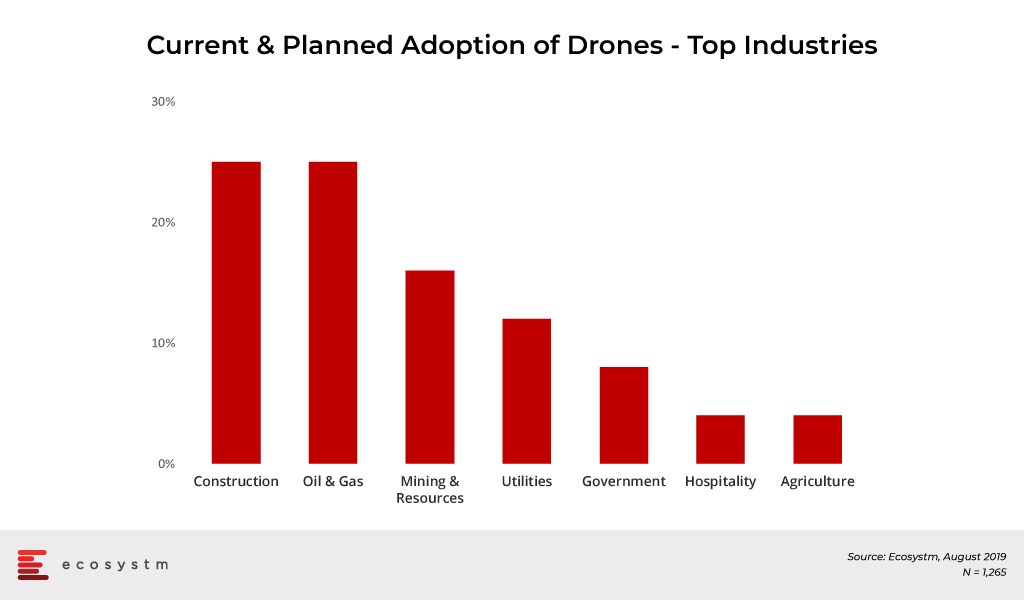
Construction
Industrial IoT is opening up opportunities for construction organisations. IoT devices have the potential to increase efficiency of construction sites and drones are one of the devices that can enhance safety and site operations. Instead of deploying heavy machinery and expensive tools, drones offer the capabilities to survey industrial sites to providing greater accuracy to building maps, QC processes, documenting project details – while reducing costs and project duration.
KIER, a construction and property group in UK is utilising drones to capture project progress, take 360 photographs and use it for photogrammetry (using photographs to model real-world objects and scenes). The benefits that the company reports include digital asset management and data insights, which in turn lead to cost reductions.
Drones will become an integral part of the Construction industry, to a large part because of safety and compliance requirements – and the industry needs to be prepared for it. UK’s Engineering Construction Industry Training Board (ECITB) has launched a training course and program for industrial drone operators to attain and develop the skill to safely fly drones and operate industrial equipment that has specific operational hazards and constraints.
Energy and Utilities
This is another industry group that can benefit in a similar way from drones. Drones can perform hazardous jobs otherwise performed by humans such as surveying transmission lines, inspecting plant boilers, monitoring the health of solar panels, assessing storm damages and even repair faster. The industry has been traditionally using helicopters but drones are a lower-cost alternative – both for procurement and maintenance.
It is easy to see why Laserpas, one of the largest Utility Asset Management Companies in the EU is using drones for their workflow automation initiatives. Laserpas surveys power grid infrastructure, including power lines, transmission towers, adjacent areas and so on, with the help of drones. The drones are gathering data for AI-driven data analysis to increase the efficacy of their high-precision monitoring solutions
Laserpas is by no means alone – AT&T is using drones to avoid service disruption through aerial monitoring of towers, replace faulty parts and create portable cell towers in mission-critical areas.
Government
Perhaps the earliest adopters of drones were a military defence in several countries. However, the use cases in Government are not restricted to that – it involves public safety and logistics in several Government agencies. They have become the means for agencies to gather data – both for situational awareness and scientific purposes – in a more efficient manner.
The ability of UAVs to cover large areas in a short time is helping emergency teams in search and rescue operations. The example from UK where a man involved in a crash was rescued from freezing temperatures by police drones, is a case in point. The emergency unit equipped a drone with a thermal camera that was able to locate the man in a six-foot deep ditch more than 500 feet from the crash site. There are examples of Public Health as well. In a municipality in Spain, mosquito control programs are using drones to conduct surveillance in likely breeding sites that are hard to reach. Once larval habitats are identified, drones are also programmed to spray pesticides to the area. Transport drones are also being used by Public Health agencies. Ghana’s government uses drones to supply blood and other critical medical supplies to remote areas. It has had a positive impact on the nation’s overall medical supply chain and the Ghana Civil Aviation Authority have plans to create an air corridor for the drones to prevent collisions with larger aircraft.
Perhaps the biggest use case for drones in Government will come from public safety measures. The Washington State Patrol has built up a fleet of 100 drones and using them for maintaining law and order in the state and for wide range of purposes including surveillance of armed and barricaded suspects and search and rescue operations. This will probably see a higher uptake than other solutions in Government.
Hospitality, Retail and Logistics
Though the adoption of drones in these industries is not yet as widespread as in others, there is tremendous potential in inventory and supply chain management. Walmart has conducted pilots on drones for warehouse management which has now been moved to implementation. Using drones reduces the need for heavy assets such as forklifts and conveyor systems.
UAVs are the best new way of tracking inventory using tracking mechanisms such as RFID and QR-codes UPS has set up a subsidiary that uses drones for delivery. Companies such as DHL, Amazon, and Google are developing and experimenting with drones to speed up delivery, especially for lightweight consumer goods. Drones not only help with inventory management but also ensures last-mile delivery.
The Hospitality industry has gone beyond logistics in their business application of drones. Examples are broad including creating marketing videos for properties, aerial site maps to help guests and staff members navigate sprawling grounds and surveillance. Drones make it possible to create a 3D virtual environment for security teams to monitor hotel perimeters, parking lots and outdoor venues effectively. This is more economical than hiring a full-time security crew for surveillance cameras and 24/7 monitoring. The Seadust Cancun Family Resort has a lifeguard drone that helps real lifeguards by supplying safety equipment and emergency floatation devices.
Agriculture
Drones are a major component of smart farming techniques and operations where farmers can benefit from real-time information about large tracts of land.
“An ‘eye in the sky’ by way of a drone, can save days for farmers and help them in checking stock, crops, and fences, battling weeds, and even mustering cattle. Simultaneously, they can provide data to help farmers make more informed decisions around applying fertilizer, disease detection, and about managing health and safety on farms,” says Jannat Maqbool, Principal Advisor Ecosystm. (Read Jannat’s Report on IoT in Agriculture: Drivers and Challenges)
Yamaha is working with farming communities in several countries to use UAVs to spray weed killers. Drones are utilised to spray the crops applying small quantities of pesticide or fertilizer to crops, orchards and forested areas. GPS coordinates create flight paths to aim for maximum coverage. This is leading to process automation in Agriculture – an essential component of smart farming.
Drone have started to prove their worth in various industries across applications and organisations across the globe are working to integrate drones into their operations. As laws mandating them to become clearer, more industries will look to leverage drones for automation.
Which are the other industries that will see a steady uptake of drones in the near future? Tell us your thoughts.


